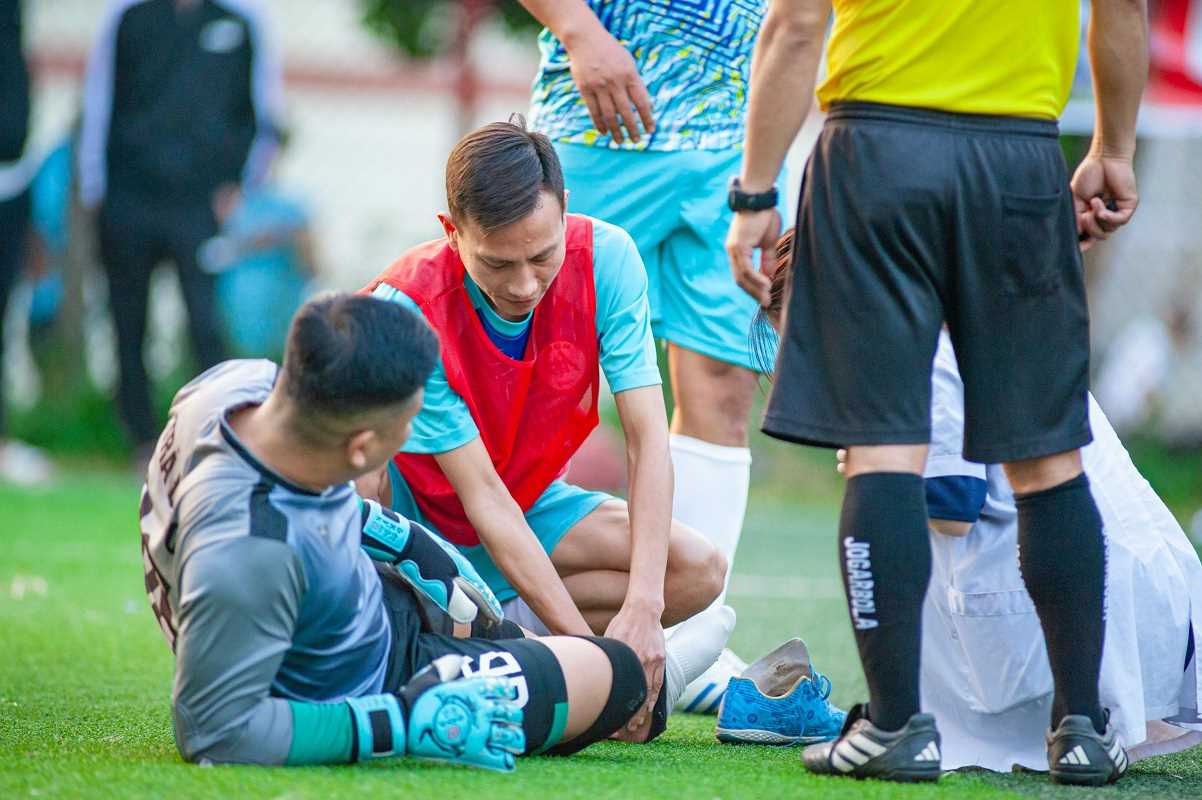Every athlete faces the possibility of unexpected injuries during both games and practices. Playing on the field or court requires more than just skill—it calls for smart habits and attention to safety. Consistent training with proper techniques, warming up thoroughly, and using the correct equipment all contribute to your ability to perform well and stay healthy. This article guides you through practical steps that make it easier to protect your body, maintain your best physical shape, and reduce your risk of getting hurt. By following these clear tips, you can enjoy your sport with greater confidence and peace of mind.
Learning how to prevent sports injuries is just as important as training hard. You can build skills, protect yourself on the field, and enjoy every match more safely. With a focus on everyday routines and practical advice, you'll discover how a few simple adjustments can make a big difference.
Details of Common Sports Injuries
Sports injuries come in many forms. The explosive nature of athletic competitions can put stress on joints, muscles, and bones. Knowing the specific types of injuries helps you identify potential risks early. You often prevent setbacks by learning about these common problems and adjusting your training methods.
Many injuries happen because basic precautions are overlooked. Knowing what injuries to watch out for allows you to take proactive recovery measures if something does go wrong. Consider the following list of frequent injuries:
- Muscle strains from overexertion
- Ligament sprains during sudden twists
- Fractures due to high-impact collisions
- Dislocations from awkward falls or tackles
Why Prevention Is Crucial
Every athlete benefits from taking steps before problems arise. Prevention surpasses treatment because it saves you time and setbacks from injuries. From avoiding unnecessary strain to ensuring full participation in your sport, the proactive approach keeps your body in peak condition. You want to stay active and engaged without the frustration of sidelined injuries.
Adopting a measured approach to practice involves adjusting your intensity and techniques. A well-planned routine reduces the likelihood of injuries while improving your performance. Recognizing your body's signals early and dedicating time to recovery can help you train harder and meet your competition goals.
Effective Warm-Up and Stretching Techniques
A proper warm-up prepares your body for peak performance and injury prevention. Increasing blood flow to muscles improves flexibility and coordination. Making time for routines before you start your session means you set yourself up for success and reduce potential risks. Stretching not only gets your body ready for strenuous activity but also helps prevent strains and sprains.
Follow these numbered steps for an effective warm-up routine:
- Begin with a light jog or brisk walk for five minutes to raise your heart rate.
- Engage in dynamic stretches like leg swings, arm circles, and torso twists to loosen your muscles.
- Add sport-specific drills that mimic movements in your game to further prepare your body.
- Finish with static stretches, holding each for at least 20 seconds to maintain muscle elasticity.
Using Proper Equipment and Safety Gear
Choosing the right gear is vital for protecting your body from injuries. Quality equipment, such as padded helmets, sturdy ankle guards, and supportive footwear, protects against impacts. When you buy safety gear, look for trusted brands like Adidas or Under Armour, which focus on performance and protection.
Regularly check your gear to ensure it remains effective. A small tear or worn-out mechanism in a piece of equipment can turn minor contact into a serious injury. Following manufacturer instructions for care and maintenance further increases your sports readiness and helps prevent unexpected issues during play.
Building Strength and Flexibility
Developing strength and flexibility lowers the risks associated with intense athletic activities. A conditioning program that emphasizes both muscle power and elasticity provides a solid foundation. Strength training boosts resilience, while flexibility exercises keep you agile and sharp on the field.
Perform exercises like squats, lunges, and push-ups that reinforce the major muscle groups. Complement these with stretching sessions targeting tight areas such as the hamstrings and calves. A balanced workout routine ensures you stay competitive while avoiding common injuries. Tracking your progress and gradually increasing your workout intensity helps you know when to push a little more and when to back off.
Recognizing Overuse Signs and When to Rest
Your body shows clear signals when it needs rest. Overuse injuries can develop gradually, presenting as lingering muscle soreness, persistent joint pain, or reduced mobility. Recognizing these signs early helps you switch gears before minor issues turn into major setbacks. Keep in mind that taking a break now can lead to stronger performance later.
Watch out for these common warning signs:
- Ongoing discomfort after practices or games.
- Sudden drops in performance or energy levels.
- Swelling in joints or muscles.
- Stiffness upon waking in the morning.
Train Smart and Prevent Injuries
Taking breaks and adding rest days helps your body recover and prevents injury. Include cross-training and listen to warning signs like pain or fatigue—back off when needed.
Use proper technique, recovery time, and the right gear to reduce risk. Prioritize long-term health so you can stay active and improve with confidence. Smart prep keeps you safe and strong.
 (Image via
(Image via





